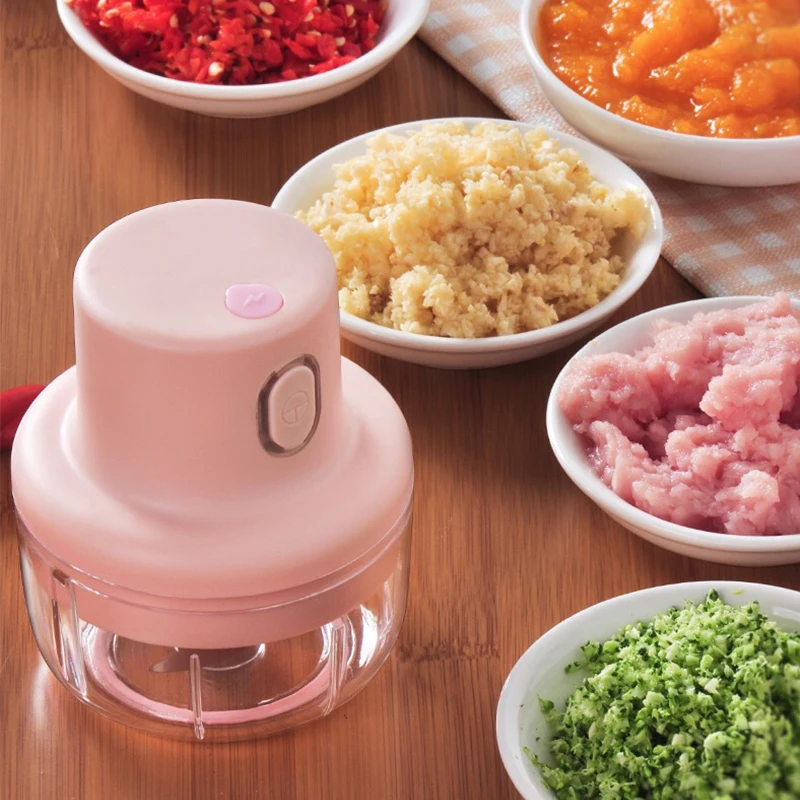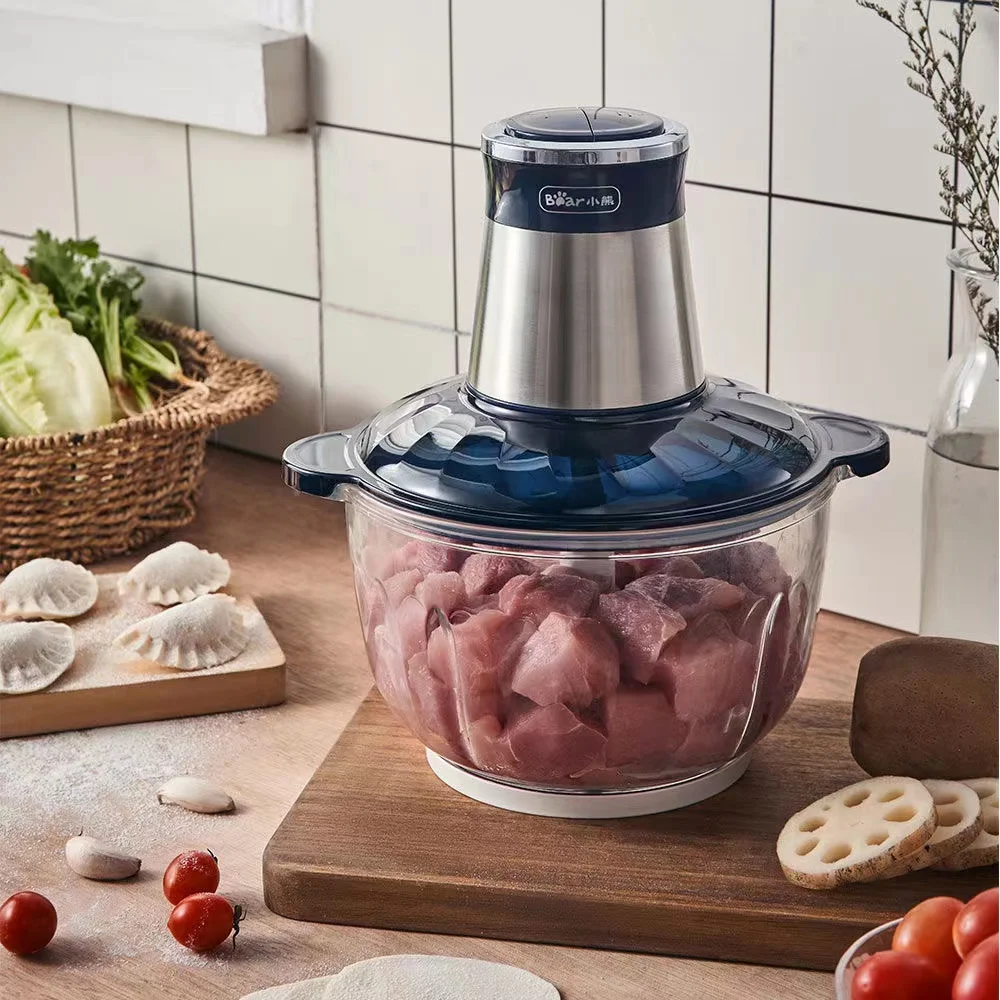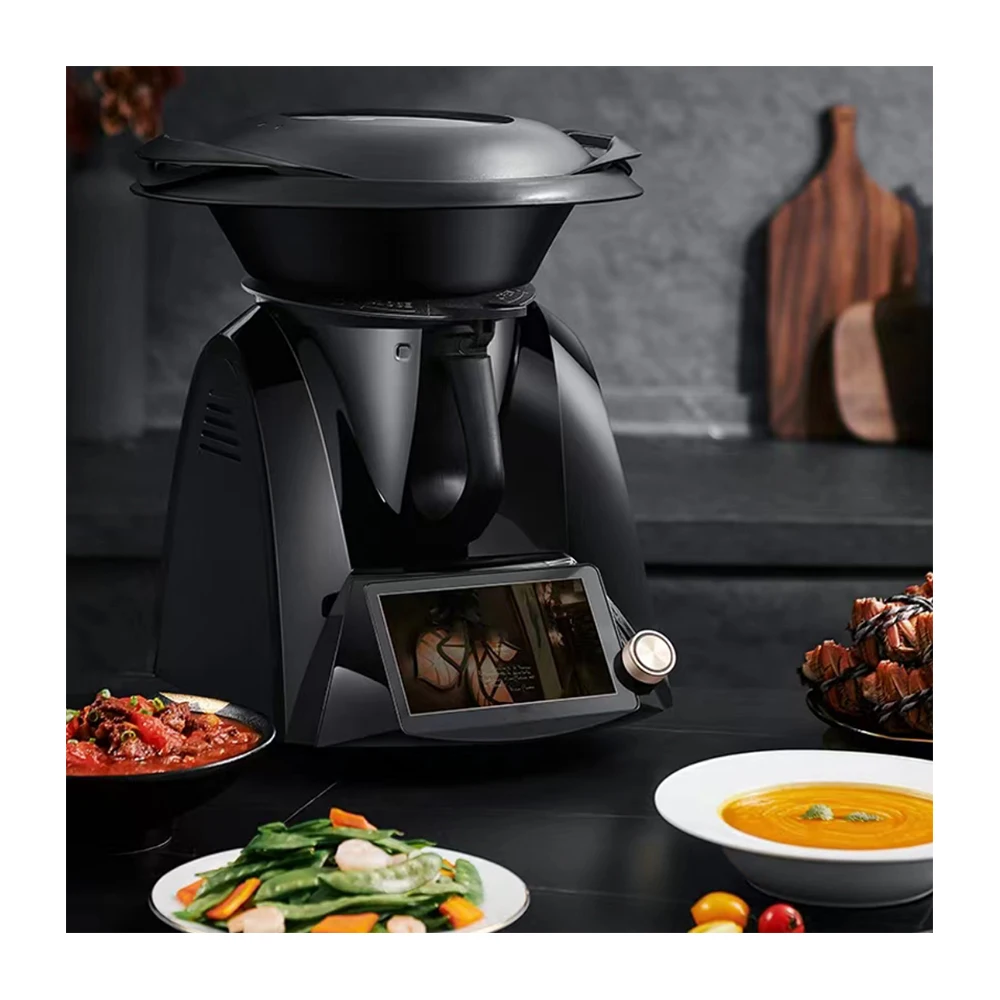
Introduction to Kitchen Appliances
The kitchen is an essential part of the home. It’s where meals come to life. To make cooking easier, it’s important to have the right tools. Two key appliances many ask about are the blender and the food processor. These appliances offer different benefits to cooks. They ease the task of creating a variety of dishes. But, can a food processor blend like a blender? Is a blender as versatile as a food processor? This blog post helps to clarify these questions. Understanding the functions of these tools is vital. It allows one to make the right choice for their kitchen needs. Whether making smoothies or shredding vegetables, knowing which appliance to use matters. This section lays the foundation for more detailed discussions ahead. We will explore capabilities, limitations, and specific applications of each appliance. The goal is to help you use each tool effectively. We want to enhance your cooking experience at home. Stay tuned as we dig deeper into the world of blenders and food processors. Let’s unlock their true potential together!

Deciphering the Blender: Capabilities and Limitations
Blenders are common kitchen appliances. They are best known for making smooth, liquid-based foods. Think smoothies, soups, and sauces. Blenders have a fixed blade and a tall jar. This design creates a vortex, pulling ingredients towards the blade. It results in a finely blended mixture.
Yet, blenders are not all-powerful. They struggle with thick or dry mixtures without added liquid. Blenders also cannot handle hard foods like coffee beans or certain spices. They are made for tasks that require a creamy consistency. Pulling off such tasks usually involves some sort of liquid.
Let’s break down the capabilities:
- Liquid Mastery: Blenders excel with anything pourable. Smoothies, soups, and milkshakes are their forte.
- Ice Crushing: Most models can handle ice, perfect for cold drinks.
And now for limitations:
- Not for Dough: Kneading dough is beyond a blender’s skills.
- Limited Chopping: Blenders can chop soft items but aren’t great at it.
In short, blenders are liquid specialists. They are not cut out for the tough jobs. But for drinks and soups, they shine brightly. This makes them an essential tool in the kitchen. Especially for those who love liquid treats. Remember these points as you decide whether a blender fits your needs.
The Versatility of a Food Processor
Food processors are kitchen multi-tools. Unlike blenders, they come with various blades. These blades serve many kitchen tasks. They can chop, slice, mix, knead, and more. A food processor’s design is also unique. Its wide bowl allows for easy adding of ingredients during operation. This makes it versatile and handy for a variety of recipes.
Food processors handle tasks like:
- Chopping: Rough cuts for salads or stews are quick and easy.
- Slicing: Get even slices of fruits, veggies, or cheese in no time.
- Kneading Dough: Making bread or pizza dough becomes a less tiring task.
- Pureeing: Unlike blenders, they manage thick mixes without added liquid.
With the right attachment, food processors can also:
- Grate Cheese: Turn a block into shredded cheese for toppings.
- Grind Meat: Prepare meat for burgers or meatballs with ease.
- Make Breadcrumbs: Old bread transforms into breadcrumbs in seconds.
For tougher kitchen jobs, a food processor is a go-to appliance. It cuts down prep time. It gives you time for other cooking tasks. With the versatility of a food processor, you can expand your recipe repertoire. Just remember to use the right blade for the job. This ensures the best results and takes care of the appliance.
Comparing Features: Blender vs Food Processor
Understanding the differences between these two appliances is key. Below, we compare their features.
Design and Structure
Blenders have a tall, narrow jar. It’s made for pouring. The fixed blade at the bottom makes smooth liquids. Food processors feature a wide bowl. It’s good for bulky items. They have a more complex structure with multiple attachments.
Blades and Attachments
Blender blades are usually fixed. They blend and puree well. Food processors come with various blades. You can chop, slice, knead, and more. They swap out for different tasks.
Primary Functions and Performance
Blenders are great for drinks like smoothies and soups. They handle liquids and soft items. Food processors are versatile. They handle solids and do jobs like slicing and kneading. Choose based on what you cook often.
When to Use a Blender: Specific Applications
Blenders shine when creating drinks and other liquid-based recipes. They blend everything into a smooth consistency.
Smoothies and Liquid Meals
Smoothies are a blender’s specialty, making them ideal for quick, nutritious breakfasts or snacks. A blender turns fruits, vegetables, and liquids into refreshing meals.
Blenders also excel at blending soft ingredients for soups. They puree vegetables and stock into silky smooth soups.
Frozen Delights and Cocktails
Frozen desserts, like ice creams or sorbets, are easy with a blender. Add fruits and ice, then blend for a cool treat.
Cocktails like margaritas or smooth slushy drinks require crushed ice, which blenders handle well.
Purees and Dips
Use a blender to make creamy purees or dips. Blend cooked veggies or beans for a smooth texture.
Blenders mix ingredients for dips such as hummus or guacamole. They create an even, creamy consistency.
When to Utilize a Food Processor
Choosing a food processor is ideal for complex tasks. It simplifies cutting and blends with ease. Let’s explore specific uses for these robust kitchen allies.
Shredding and Slicing
A food processor is perfect when you have a lot of slicing or shredding. It swiftly turns blocks of cheese into shredded heaps. It creates uniform slices of fruits or veggies in a snap. These tasks take time by hand, but a food processor speeds things up.
- Cheese Shredding: A quick way to prepare toppings for pizzas or tacos.
- Even Slicing: Consistent cuts for salads, garnishes, or layering in dishes.
Kneading Dough and Making Breadcrumbs
For bakers, a food processor is a dream. It mixes and kneads dough faster than doing it by hand.
- Dough Kneading: Makes bread, pizza bases, or pastry dough with less effort.
- Breadcrumb Making: Turns stale bread into fine or coarse crumbs, perfect for coatings.
Handling Tough Ingredients
Food processors tackle tasks that are tough for blenders. They grind, chop, and mix hard foods without a struggle.
- Nut Grinding: Turns nuts into flour or butter with precision.
- Vegetable Chopping: Manages hard roots and fibrous veggies easily.
- Meat Grinding: Prepares meat for patties or filling, saving time and effort.
Using a food processor is straightforward. Attach the needed blade, add your ingredients, and let it work. The results are consistent and require little to no liquid. Crucial for denser recipes. Every cook can benefit from a food processor. Especially when dealing with challenging ingredients or large amounts.
 Similarities and Overlaps in Functions
Similarities and Overlaps in Functions
While we’ve discussed how blenders and food processors differ, they also share functions. Both can puree and mix ingredients well. Here we explore where they align and where either one could serve your purpose.
- Pureeing: Both appliances can puree soft foods like cooked vegetables or fruits.
- Mixing: Each can mix items such as batters for pancakes or dressings.
Despite their differences, both blenders and food processors handle liquids and semi-solids. They blend or puree to a smooth consistency. But, the texture and final product may not always be the same.
- Smooth Texture: Blenders produce very smooth textures, ideal for drinks or soups.
- Coarser Texture: Food processors can leave a bit more texture, suited for dips like salsa.
For jobs needing either a blended liquid or a chopped solid, both can work. But, each has unique strengths.
- For Liquids: Use a blender for drinks, smoothies, or liquid batters.
- For Solids: Choose a food processor for drier blends like nut flours or doughs.
Cleaning both appliances is straightforward. They have detachable parts, easy to wash. This adds to their convenience and functionality in the kitchen.
Cleaning and Care for Longevity
Proper maintenance extends the life of your appliances. As with all kitchen tools, blenders and food processors need regular cleaning. This is key to keeping them in good working order. Here are tips for taking care of these essential gadgets:
- Immediate Rinsing: After use, rinse blades and bowls right away. This prevents food from drying and sticking.
- Soap and Water: Use warm, soapy water for a thorough clean. Scrub parts gently to remove any residue.
- Dishwasher Use: Many parts are dishwasher safe. Check your manual to be sure. Use the top rack when possible.
- Dry Parts Fully: Before reassembling, make sure all parts are dry. This avoids mold and bad smells.
- Sharp Blade Care: Handle blades with care. Store them safely to keep edges sharp and avoid accidents.
- Motor Base: Wipe it with a damp cloth. Never submerge it in water.
- Regular Inspection: Check for wear or damage often. Replace parts as needed to ensure safety and efficiency.
By following these simple upkeep tips, you will enhance performance. You will also prolong the lifespan of your blenders and food processors. Ensuring clean and well-maintained appliances will contribute to their reliability. This lets you enjoy their benefits for many years to come.
 Conclusion: Choosing According to Your Needs
Conclusion: Choosing According to Your Needs
As we wrap up our discussion on blenders and food processors, the choice ultimately falls on your unique cooking habits. Consider the variety of tasks you perform in the kitchen. Reflect on the types of meals you prepare often. Each appliance excels in different areas, and choosing the right one can simplify your culinary tasks.
Evaluating Your Cooking Style
If creamy soups and smoothies are your favorites, a blender is your ally. It specializes in smooth, liquid-based creations. For those who savor frozen treats or enjoy crafting cocktails, a blender meets these needs with ease.
However, if you find yourself often chopping, kneading, or slicing, a food processor is your go-to. It’s built to handle tougher and more varied tasks. From shredding cheese to making breadcrumbs, it does the heavy lifting.
Considering Versatility and Functionality
Yes, blenders and food processors share some common ground. They can both puree and mix with proficiency. Yet, their approaches and outcomes differ. Blenders deliver silky textures, while food processors can maintain a bit more bite.
Prioritizing Convenience and Space
Space in your kitchen might also influence your decision. If you have room for both, they can work together to cover all your needs. Cleaning and upkeep are crucial, regardless of which you choose. Keep them in great shape to ensure they last.
In summary, base your decision on personal preferences and cooking routines. Whether it’s the liquid wizardry of a blender or the dynamic versatility of a food processor, selecting the right appliance will enhance your cooking experience. Make meal prep easier, and let your culinary creativity soar!





